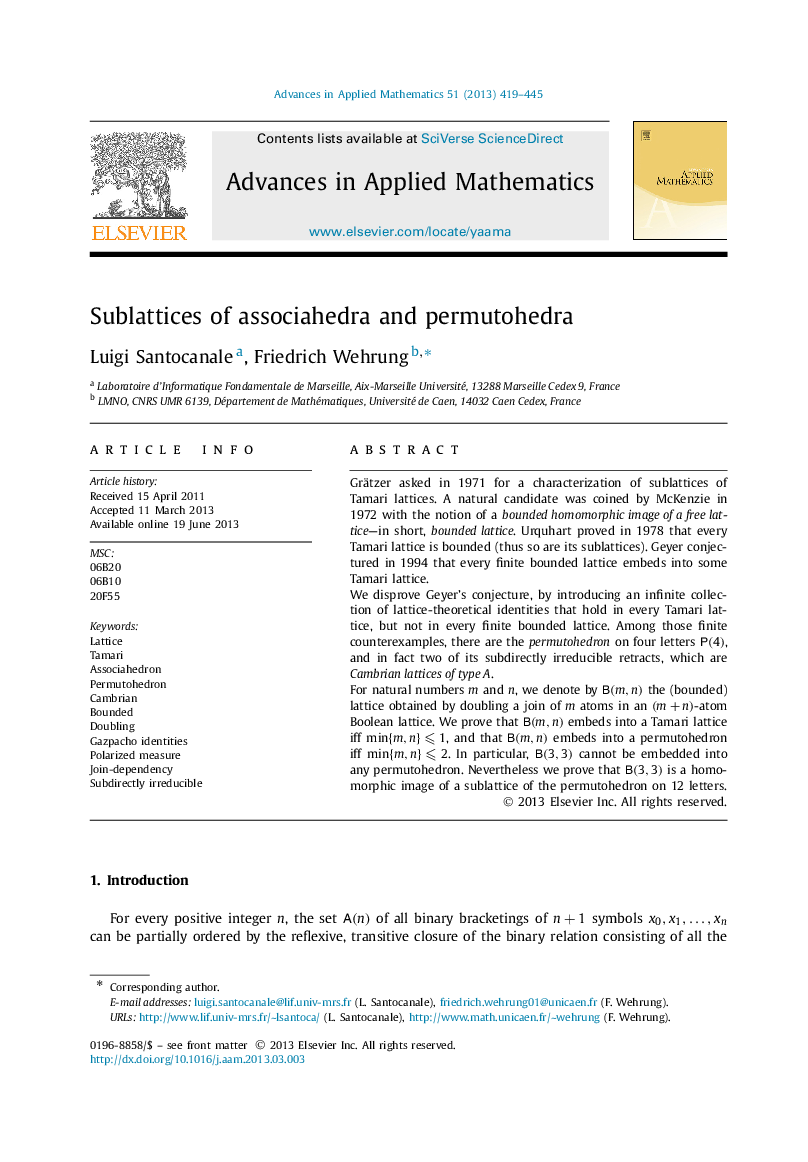| Article ID | Journal | Published Year | Pages | File Type |
|---|---|---|---|---|
| 4624699 | Advances in Applied Mathematics | 2013 | 27 Pages |
Grätzer asked in 1971 for a characterization of sublattices of Tamari lattices. A natural candidate was coined by McKenzie in 1972 with the notion of a bounded homomorphic image of a free lattice—in short, bounded lattice. Urquhart proved in 1978 that every Tamari lattice is bounded (thus so are its sublattices). Geyer conjectured in 1994 that every finite bounded lattice embeds into some Tamari lattice.We disprove Geyerʼs conjecture, by introducing an infinite collection of lattice-theoretical identities that hold in every Tamari lattice, but not in every finite bounded lattice. Among those finite counterexamples, there are the permutohedron on four letters P(4)P(4), and in fact two of its subdirectly irreducible retracts, which are Cambrian lattices of type A.For natural numbers m and n , we denote by B(m,n)B(m,n) the (bounded) lattice obtained by doubling a join of m atoms in an (m+n)(m+n)-atom Boolean lattice. We prove that B(m,n)B(m,n) embeds into a Tamari lattice iff min{m,n}⩽1min{m,n}⩽1, and that B(m,n)B(m,n) embeds into a permutohedron iff min{m,n}⩽2min{m,n}⩽2. In particular, B(3,3)B(3,3) cannot be embedded into any permutohedron. Nevertheless we prove that B(3,3)B(3,3) is a homomorphic image of a sublattice of the permutohedron on 12 letters.
